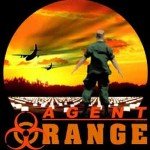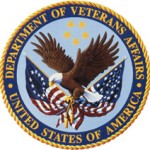 According to Tom Philpott in his article New Agent Orange Rule to Allow Retro Claims by 86,000 about 86,000 Vietnam War veterans, their surviving spouses or estates will be eligible for retroactive disability compensation from the Department of Veterans Affairs — an average of 11.4 years for veterans and 9.6 years for survivors — under a draft VA rule to expand by three the number of diseases presumed caused by herbicide exposure in the war.
According to Tom Philpott in his article New Agent Orange Rule to Allow Retro Claims by 86,000 about 86,000 Vietnam War veterans, their surviving spouses or estates will be eligible for retroactive disability compensation from the Department of Veterans Affairs — an average of 11.4 years for veterans and 9.6 years for survivors — under a draft VA rule to expand by three the number of diseases presumed caused by herbicide exposure in the war.
The VA issued a media release on March 25, 2010 that covers changes in Agent Orange claims in a broader context.
Robert L. Hanafin, Major, U.S. Air Force-Retired, VT News
VA Proposes Change to Aid Veterans Exposed to Agent Orange
 Proposed Regulation Change Adds Illnesses to List of Diseases Subject to Presumptive Service Connection for Herbicide Exposure
Proposed Regulation Change Adds Illnesses to List of Diseases Subject to Presumptive Service Connection for Herbicide Exposure
Well over 100,000 Veterans exposed to herbicides while serving in Vietnam and other areas will have an easier path to qualify for disability pay under a proposed regulation published by the Department of Veterans Affairs (VA) that adds three new illnesses to the list of health problems found to be related to Agent Orange and other herbicide exposures.
“This is an important step forward for Vietnam Veterans suffering from these three illnesses,” said Secretary of Veterans Affairs Eric K. Shinseki. “These warriors deserve medical care and compensation for health problems they have incurred.”
The regulation follows Shinseki’s October 2009 decision to add the three illnesses to the current list of diseases for which service connection for Vietnam Veterans is presumed. The illnesses are B cell leukemias, such as hairy cell leukemia; Parkinson’s disease; and ischemic heart disease.
The Secretary’s decision is based on the latest evidence of an association with widely used herbicides such as Agent Orange during the Vietnam War, as determined in an independent study by the Institute of Medicine (IOM).
Even though this is a proposed rule, VA encourages Vietnam Veterans with these three diseases to submit their applications for compensation now so the Agency can begin development of their claims and so they can receive benefits from the date of their applications once the rule becomes final.
Comments on the proposed rule will be accepted over the next 30 days. The final regulation will be published after consideration of all comments received.
“We must do better reviews of illnesses that may be connected to service, and we will,” Shinseki added. “Veterans who endure health problems deserve timely decisions based on solid evidence.”
Over 80,000 of the Veterans will have their past claims reviewed and may be eligible for retroactive payment, and all who are not currently eligible for enrollment into the VA health care system will become eligible.
 During the Vietnam War, the U.S. military used more than 19 million gallons of herbicides for defoliation and crop destruction in the Republic of Vietnam. Veterans who served in Vietnam anytime during the period beginning January 9, 1962, and ending on May 7, 1975, are presumed to have been exposed to herbicides.
During the Vietnam War, the U.S. military used more than 19 million gallons of herbicides for defoliation and crop destruction in the Republic of Vietnam. Veterans who served in Vietnam anytime during the period beginning January 9, 1962, and ending on May 7, 1975, are presumed to have been exposed to herbicides.
Used in Vietnam to defoliate trees and remove concealment for the enemy, Agent Orange and other herbicides left a legacy of suffering and disability that continues to the present.
The new rule will bring the number of illnesses presumed to be associated with herbicide exposure to 14 and significantly expand the current leukemia definition to include a much broader range of leukemias beyond chronic lymphocytic leukemia previously recognized by VA.
In practical terms, Veterans who served in Vietnam during the war and who have a “presumed” illness don’t have to prove an association between their illnesses and their military service. This “presumption” simplifies and speeds up the application process for benefits.
Other illnesses previously recognized under VA’s “presumption” rule as being caused by exposure to herbicides during the Vietnam War are:
- AL Amyloidosis,
- Acute and Subacute Transient Peripheral Neuropathy,
- Chloracne or other Acneform Disease consistent with Chloracne,
- Chronic Lymphocytic Leukemia, (now being expanded)
- Diabetes Mellitus (Type 2),
- Non-Hodgkin’s Lymphoma,
- Porphyria Cutanea Tarda,
- Prostate Cancer,
- Respiratory Cancers (Cancer of the lung, bronchus, larynx, or trachea), and
- Soft Tissue Sarcoma (other than Osteosarcoma, Chondrosarcoma, Kaposi’s sarcoma, or Mesothelioma).
Additional information about Agent Orange and VA’s services for Veterans exposed to the chemical are available at www.publichealth.va.gov/exposures/agentorange.
Source Department of Veterans Affairs http://www1.va.gov/opa/pressrel/pressrelease.cfm?id=1876
While the VA Press Release above mentions, “Over 80,000 of the Veterans will have their past claims reviewed and may be eligible for retroactive payment, and all who are not currently eligible for enrollment into the VA healthcare system will become eligible,” Tom Philpott notes that number to be more realistically 86,000.
According to Tom, the 86,000 are beneficiaries who can reopen previously denied claims for ischemic heart disease, Parkinson’s disease and chronic B-cell blood cancers including hairy cell leukemia. A more detailed listing was made available by the 25 March VA press release. However, Tom notes that another 29,000 claims are expected to be approved this year for Vietnam veterans suffering from these diseases but applying for benefits for the first time. VA plans to hire 1772 new claims processors, starting this October, to be able to handle these claims “without significantly degrading the processing of the non-presumptive workload.”
In the proposed rule published March 25 in the Federal Register, VA officials explained that Secretary Eric Shinseki has cut the usual 60-day public comment period by half “to promote rapid action” on these claims.
 VT Editorial Note: To view either a text or .pdf file on the Proposed Rule changes listed in the Federal Register on 25 March go to http://edocket.access.gpo.gov/2010/2010-6549.htm (test) or http://edocket.access.gpo.gov/2010/pdf/2010-6549.pdf (PDF)
VT Editorial Note: To view either a text or .pdf file on the Proposed Rule changes listed in the Federal Register on 25 March go to http://edocket.access.gpo.gov/2010/2010-6549.htm (test) or http://edocket.access.gpo.gov/2010/pdf/2010-6549.pdf (PDF)
Tom notes that when a final rule is published, soon after April 26, VA claim offices across the country can begin making payments. Veterans with these diseases will need to show they set foot in Vietnam during the war. Those who served aboard ship just off the coast remain ineligible. “Adding ischemic heart disease to the list of presumptive Agent Orange illnesses is by far the most significant part of the new rule, accounting for 82 percent of additional expected payments to beneficiaries.” Philpott said.
The rule defines ischemic heart disease (IHD) as a condition causing inadequate supply of blood and oxygen to the myocardium, the middle and thickest layer of the heart wall. “IHD” can include, but is not limited to, acute, subacute and old myocardial infarction (heart attacks in layman’s terms); atherosclerotic cardiovascular disease including coronary artery disease (or spasm) and coronary bypass surgery, and stable, unstable and Prinzmetal’s angina. (All related to Heart Disease in layman’s terms. VT Editorial comment).
Because Ischemic Heart Disease (IHD) is a heart disease it “does not include hypertension (high blood pressure alone) or peripheral manifestations of arteriosclerosis such as peripheral vascular disease or stroke,” the draft regulation explains.
Of [the 80,000 to] 86,000 beneficiaries eligible for retroactive claims, VA estimates that nearly 70,000 of them are living Vietnam veterans, their average age now 63. Of those, 62,200 previously were denied compensation for IHD, 5400 were denied for B-cell leukemia and 2300 for Parkinson’s disease. About 53,000 who previously filed claims for these diseases already are receiving VA compensation for other service-related diseases. Of those, roughly 8350 are already rated 100-percent disabled and therefore might not be eligible for retroactive pay.
Tom notes that the VA assumes that veterans with Parkinson’s disease or for B-cell leukemia will be awarded a 100-percent disability ratings. The average rating for ischemic heart diseases is expected to be 60 percent. In calculating VA costs from this change, VA assumes that 80 percent of the eligible population will apply for benefits and 100 percent of those who do will be approved. But eligible vets and suvivors must file claims to get paid; nothing will happen automatically. To file claims online visit: http://vabenefits.vba.va.gov/vonapp/main.asp. Veterans without a computer can call a toll-free helpline at 1-800-749-8387.
VA maintains a directory of veterans’ service organizations with trained staff to help in filing claims. The website: http://www1.va.gov/vso/. Many state, county and local governments also have personnel to help. Find information on these agencies at: http://www.va.gov/statedva.htm.
VA also expects many ineligible veterans to file claims. They will be found ineligible because they can’t show they ever set foot in Vietnam though they suffer from one of the qualifying diseases. Many claims will be filed by veterans with hypertension [high blood pressure] but those will be rejected because that condition is not a “heart disease” under the VA draft regulation.
VT Editorial Comment: We support legislation that was introduced in Congress during 2009 that would expand eligibility to Veterans serving in the vicinity of Vietnam who may have been exposed to Agent Orange such are Airmen exposed while loading the chemicals or spraying the chemical or Blue Water Navy serving aboard ships off shore participating in spraying operations. H.R. 2254: the Agent Orange Equity Act To amend the law, and to clarify presumptions relating to the exposure of certain veterans who served in the vicinity of the Republic of Vietnam. See also Agent Orange Equity Act of 2009 (HR 2254, 111th Congress) published on the Lawyers for Warriors website.
Philpott reports that in total, VA expects claims volume from presumptive Agent Orange diseases to hit 159,000 this year and to exceed 270,000 by fiscal 2019. The growing list of Agent Orange diseases stems of a court case, Nehmer v. Department of Veterans Affairs, filed in 1986 The class action lawsuit won by veterans, and reinforced by legislation, requires VA to direct the National Academy of Sciences to report every two years on any positive association between new diseases and exposure to herbicides in Vietnam. The NAS reports are to continue through Oct. 1, 2014, with the possibility that more diseases will be found to have an association with herbicide exposure.
Credit for part of this article goes to Tom Philpott for extractions from his article New Agent Orange Rule to Allow Retro Claims by 86,000 to read his full text or to comment, e-mail milupdate@aol.com, write to Military Update, P.O. Box 231111, Centreville, VA, 20120-1111 or visit: www.militaryupdate.com.
To find out more about Tom Philpott, his bio can be found at the link to his entire article.
The bulk of this article is based on Department of Veterans Affairs News Release dated March 25, 2010, and public domain information found in the Federal Register for 25 March 2010.
Robert L. Hanafin, Major, U.S. Air Force-Retired
Readers are more than welcome to use the articles I’ve posted on Veterans Today, I’ve had to take a break from VT as Veterans Issues and Peace Activism Editor and staff writer due to personal medical reasons in our military family that take away too much time needed to properly express future stories or respond to readers in a timely manner.
My association with VT since its founding in 2004 has been a very rewarding experience for me.
Retired from both the Air Force and Civil Service. Went in the regular Army at 17 during Vietnam (1968), stayed in the Army Reserve to complete my eight year commitment in 1976. Served in Air Defense Artillery, and a Mechanized Infantry Division (4MID) at Fort Carson, Co. Used the GI Bill to go to college, worked full time at the VA, and non-scholarship Air Force 2-Year ROTC program for prior service military. Commissioned in the Air Force in 1977. Served as a Military Intelligence Officer from 1977 to 1994. Upon retirement I entered retail drugstore management training with Safeway Drugs Stores in California. Retail Sales Management was not my cup of tea, so I applied my former U.S. Civil Service status with the VA to get my foot in the door at the Justice Department, and later Department of the Navy retiring with disability from the Civil Service in 2000.
I’ve been with Veterans Today since the site originated. I’m now on the Editorial Board. I was also on the Editorial Board of Our Troops News Ladder another progressive leaning Veterans and Military Family news clearing house.
I remain married for over 45 years. I am both a Vietnam Era and Gulf War Veteran. I served on Okinawa and Fort Carson, Colorado during Vietnam and in the Office of the Air Force Inspector General at Norton AFB, CA during Desert Storm. I retired from the Air Force in 1994 having worked on the Air Staff and Defense Intelligence Agency at the Pentagon.
ATTENTION READERS
We See The World From All Sides and Want YOU To Be Fully InformedIn fact, intentional disinformation is a disgraceful scourge in media today. So to assuage any possible errant incorrect information posted herein, we strongly encourage you to seek corroboration from other non-VT sources before forming an educated opinion.
About VT - Policies & Disclosures - Comment Policy



